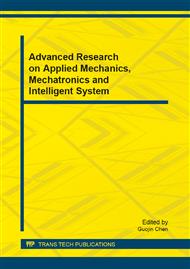[1]
Hertz H. Über die Berührung fester elastischer Körper. Journal für die reine und angewandte. Mathematik 92, 1881, 156-171.
DOI: 10.1515/9783112342404-004
Google Scholar
[2]
Carter F W. On the action of a locomotive driving wheel. Proc. R. Soc., London, A. 1926, 112: 151-157.
Google Scholar
[3]
Johnson K L. The effect of a tangential contact upon the rolling motion of an elastic sphere upon plane. Journal of Applied Mechanics, 1958, 25: 339-346.
DOI: 10.1115/1.4011823
Google Scholar
[4]
Vermeulen J K, Johnson K L. Contact of non-spherical bodies transmitting tangential forces. Journal of Applied Mechanics, 1964, 31: 338-340.
DOI: 10.1115/1.3629610
Google Scholar
[5]
Shen Z Y, Hedrick J. K. and Elkins J. A. A comparison of alternative creep-force models for rail vehicles dynamic analysis. Proc, 8th IAVSD Symp. , Cambridge, MA, 1984, 591-605.
Google Scholar
[6]
Jin Xuesong. Study on creep theory of wheel and rail system and its experiment. Ph.D. Thesis, Southwest Jiaotong University, China, 1999. 50-85.
Google Scholar
[7]
J.J. Kalker. On the Rolling Contact of Two Elastic Bodies in the Presence of Dry Friction, Ph.D. Thesis, Delft University, The Netherlands, (1967).
Google Scholar
[8]
J.J. Kalker. Simplified theory of rolling contact, Delft Progress Report, Delft Univ. Press, Netherlands, 1973, 1–10.
Google Scholar
[9]
J.J. Kalker. Three-Dimensional Elastic Bodies in Rolling Contact, Kluwer, Dordrech, (1990).
Google Scholar
[10]
J. T. Stadter, R. O. Weiss. Stress analysis of disconnected structures in contact through finite element gaps, (1976).
DOI: 10.2172/7260964
Google Scholar
[11]
J. T. Stadter, R. O. Weiss. Analysis of contact through finite element gaps, Comput. Struct. 10(1979) 867-873.
DOI: 10.1016/0045-7949(79)90055-5
Google Scholar
[12]
Jiang Xiaoyu, Jin Xuesong. Numerical simulation of wheel rolling over rail at high-speeds, Wear, 2007, 262, 666-671.
DOI: 10.1016/j.wear.2006.08.007
Google Scholar
[13]
Sun Fei, Zhao Jingwen. Plane gap element and its application to axisymmetric Contact Problems. Journal of Harbin Institute of Technology, (1999).
Google Scholar
[14]
E. C. Ting, C. Shih, Y. K. Wang. Fundamentals of a vector form intrinsic finite element: Part I. basic procedure and a plane frame element. Journal of Mechanics, 2004, 20(2): 113-122.
DOI: 10.1017/s1727719100003336
Google Scholar
[15]
E. C. Ting, C. Shih, Y. K. Wang. Fundamentals of a vector form intrinsic finite element: Part II. plane solid elements. Journal of Mechanics, 2004, 20(2): 123-132.
DOI: 10.1017/s1727719100003348
Google Scholar
[16]
C. Shih, Y. K. Wang, E. C. Ting. Fundamentals of a vector form intrinsic finite element: Part III. Convected material frame and examples. Journal of Mechanics, 2004, 20(2): 133-143.
DOI: 10.1017/s172771910000335x
Google Scholar
[17]
Zhang Ruqing, Zhan Xianyi. Non-linear finite element analysis. Chongqing: Chongqing university press. 1990. 197-200.
Google Scholar


